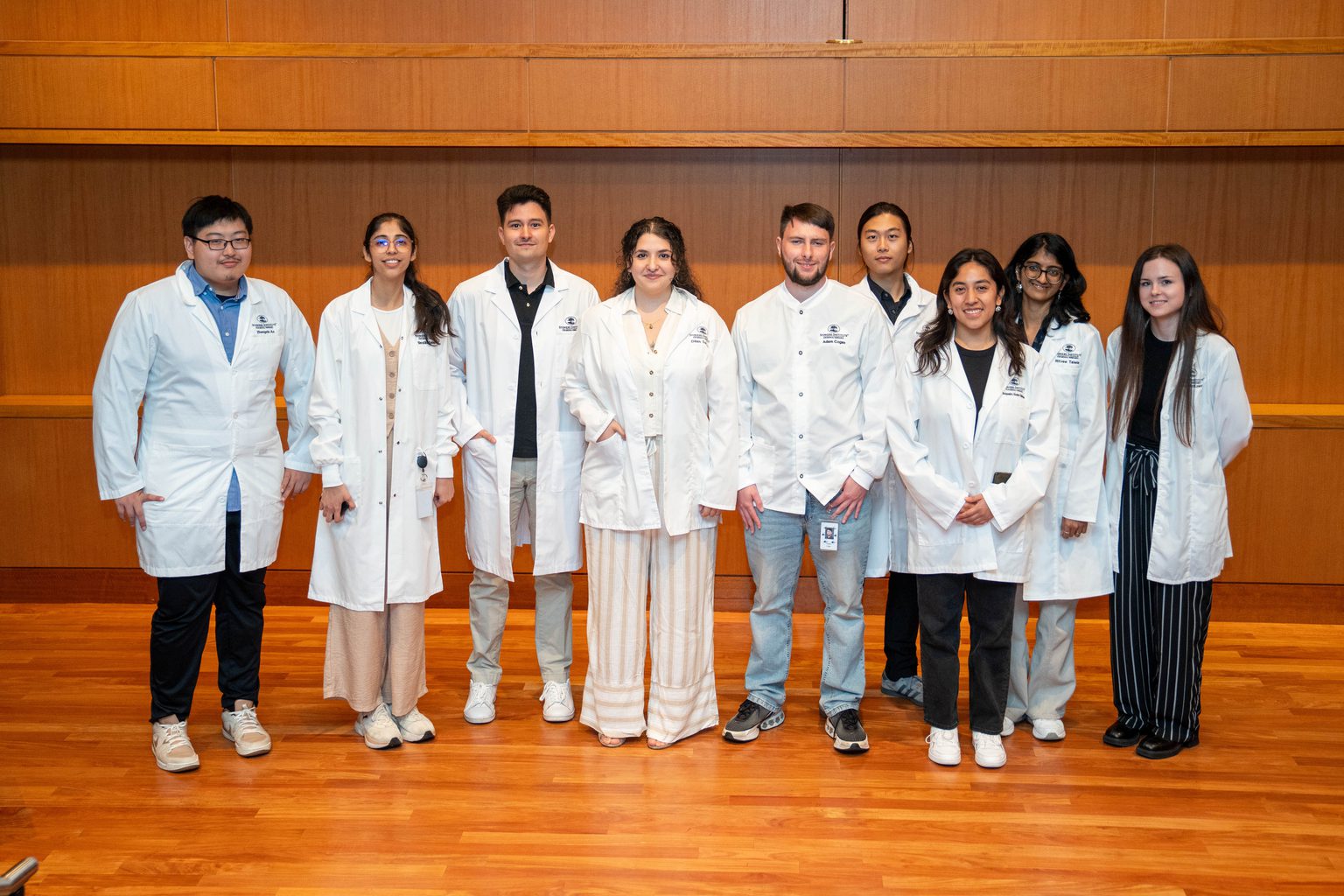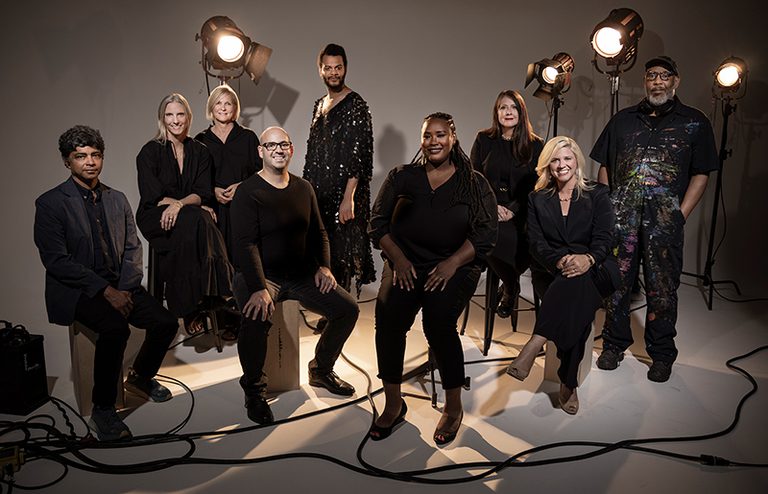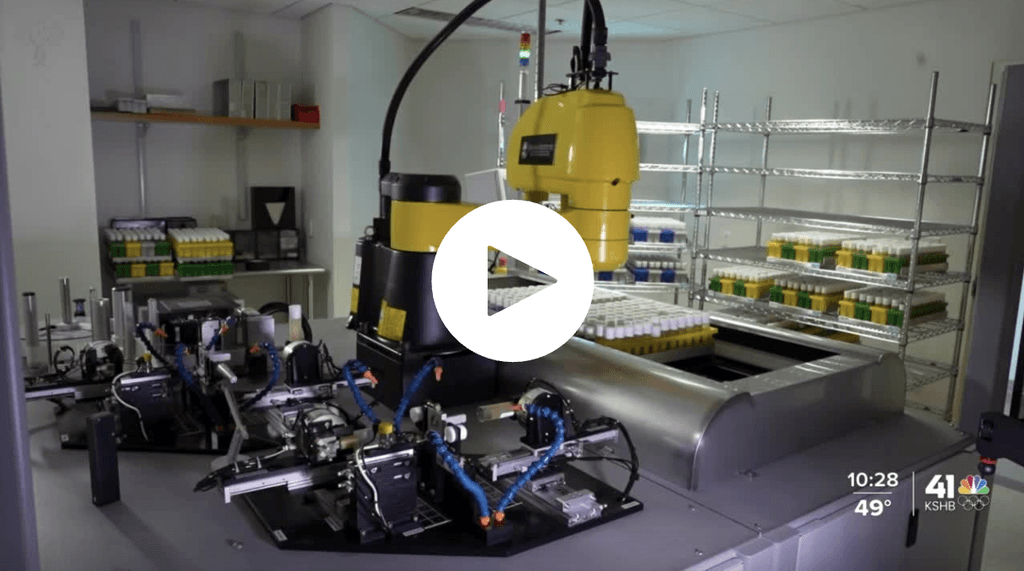News

09 October 2025
2025 Lab Coat Ceremony Welcomes Graduate Students To Their Thesis Labs
An annual tradition marks the start of scientific discovery for the 2024-2025 class of Stowers Graduate School students.
Read Article
By Alissa Poh
The rural village where Kausik Si, PhD, grew up may have lacked electricity and running water, but one thing it did have was a good school—comparable, in fact, to those in nearby Calcutta, courtesy of India’s one-size-for-all education system. Because Si’s father taught high school physics and mathematics, and the family lived right next door, students were used to seeing their teacher’s young son hanging around the laboratory, entranced by the likes of color-changing chemical solutions or watching a Van de Graaff generator produce visible electric currents. Si also struck up frequent conversations with his father’s colleagues on assorted topics, from Mendelian genetics to Darwinian evolution.
“One of them would tell me, ‘No, you don’t really understand [genetics],’” Si recalls wryly. “It made me mad, because I was sure I did, but he reminded me that having answers didn’t necessarily mean actual comprehension.”
His parents being far from the helicopter variety, Si was never asked if he’d done his homework, or otherwise pushed academically. Of his own accord, he haunted the village library and read voraciously—including books perhaps questionable for his age. Once, the youngster asked his father what “passion” meant, after the dictionary’s definition proved rather obscure.
Si’s propensity for independent thinking eventually propelled him to the United States for graduate education. “I didn’t arrive with the clearest notion of what to study,” he says, “but I quickly decided that what I didn’t want was to pursue problems with fairly clear-cut solutions.” He settled on neurobiology—figuring that the field would never lack interesting questions—which led him to the laboratory of Nobel Laureate Eric Kandel, PhD, at Columbia University, for a postdoctoral fellowship. There, Si and Kandel proceeded to turn conventional understanding of prions, long regarded as nothing but bad news, upside down. Prions are proteins that can exist in two shapes--one shape that is stable on its own and another shape that can form self-propagating aggregates. They proposed that the protein CPEB was important for long-term memory in the marine mollusk Aplysia—precisely because of its prion-like ability to form self-aggregating amyloid structures that could hang out indefinitely at, and stabilize, new synaptic connections necessary for consolidating information into more permanent storage.
There seems to be an oxymoron here, because amyloid—the aggregated protein deposit—is a known factor in multiple neurodegenerative diseases where memory loss is one of the earliest symptoms,” Si says. “We’re suggesting that prions and prion-like proteins evolved to serve regular biological functions, and diseases like Alzheimer’s are anomalies of such normal phenomena.”
After joining the Stowers Institute in 2005, Si turned his attention to the fruit fly Drosophila as a scientific model for his research. Among other discoveries, he has found that when controlled stacking up of Orb2, the fly version of CPEB, is disrupted, long-term memory formation is impaired in these flies. Now an associate investigator, Si is content to wander—and steadily ascend—what Kandel has described as “the foothills of a great mountain range,” learning ever more about the molecular whys and wherefores of memory storage.
Was it difficult for you to be convinced of your postdoctoral hunch that cpeb’s prion-like properties might be essential for Aplysia to form long-term memories?
It was actually easy, because I was young and naïve. Prions had long struck me as highly unusual, particularly their self-perpetuating ability. But if I’d been studying them from a disease-related perspective, I probably wouldn’t have concluded what I did. Eric [Kandel] and I had a great relationship by then; I was full of wacky ideas, and somehow that’s why we got along really well. So he wasn’t surprised, nor did he pour cold water on my suggestion. Nearly everyone else thought it was ridiculous. After we published our findings, I got multiple e-mails along the lines of “you’re completely out of your mind,” and “this is so wrong for so many reasons.” I never responded, but it was a nerve-wracking process to go through.
The naysayers are slowly coming around, partly because our experimental evidence has been very consistent, even independently corroborated; and also because several unrelated publications have illustrated the same principle—of prion-like proteins capable of normal functions—over the last several years.
How would you summarize your current research interests?
I’m intrigued by two questions. How do you keep a memory, for years, of something that happened in a short time? And what is it about some experiences that makes us remember them for so long? There’s no apparent rhyme or reason for many of my lasting memories; were they randomly retained, or did my brain perceive some implicit information as important, although I wouldn’t consciously think so?
I’d also like to tease apart what forgetting really means. Is it truly a blank slate, or are the details somewhere in the recesses of your brain, just inaccessible? It might even be that you could access the information, but there’s no meaning or context associated, so you don’t.
Are you able to visualize memory in Drosophila, using orb2?
We’re working on it. We’ve developed a probe, where Orb2 has to oligomerize, or form a protein complex, in order for two inactive halves of an enzyme to come together and produce a fluorescent product. So wherever Orb2 stacks up in the fly brain, there’ll be enzyme activity and increased fluorescence.
It’s a molecular “signature” of memory—in flies, anyway. We got lucky because this process is selectively engaged and, other than food and choosing a mate, flies don’t form long-term memories of most experiences. In research terms, it means we were dealing with low background noise. Things get more complex with higher organisms, and because there’s no such thing as a naïve brain, tracking down subtle changes in certain neurons over others, as representative memory “signatures,” would be a needle-in-the-haystack quest.
Can memory storage in the brain be compared to a library?
It’s frequently used, but neurobiologists dislike this analogy, because it implies a catalog—that information is stored alphabetically, which is not necessarily true with memory. There’s likely some pattern, but it might be very difficult to figure out because it is unlike any of the typical organizational patterns we encounter in our everyday lives, such as information organized alphabetically or chronologically. It’s one reason why people are so interested in mapping the brain.
What do you think of the white house’s brain initiative?
I think it’s simultaneously exciting and daunting. The challenge is even bigger than sequencing the human genome, because when you’ve mapped a brain—well, you’ve mapped a brain. If I record your brain activity and mine, both will be vastly different, yet we have nearly identical genomes. However, this initiative should enable a better understanding of the basic neural connections and circuitry we do share, and that itself will be a huge achievement.
What fascinates you about the human brain?
Language; if you want to find out how scribbled words provoke such profound feelings as joy, loss, or anger, you can’t look to yeast for answers. A rat is never going to write One Hundred Years of Solitude.
Do you think the general public perceives “scientific knowledge” differently than you and your peers?
Definitely. To us, it’s an intellectual quest to understand how biological systems work, for example. To the public, it’s more about fixing problems, and helping people live longer and better. We need to change this perception.
After all, what’s the probability that by studying a fly’s brain, I’ll come up with a solution for human psychological disorders? Zilch, honestly. But could I provide insight as to how, fundamentally, an organism assesses its external environment and stores that information to guide its future behavior? Yes, I think so. To me, uncovering this knowledge is just as important. Fixing problems is generally more a consequence of achieving understanding.
Scientists are often thought of as objective. Do you agree?
No, we have plenty of prejudices and our basic instinct is one of neophobia. Like anyone else, we have two choices when we come across something new—pursue it and see where it takes us, or decide we’re not going down that road. But it’s difficult to know how rarely or often the unknown route is actually taken, because you never hear of the failures, only the successes.
Pulitzer-winning author of American Pastoral, Philip Roth, says “character is destiny, yet everything is chance.” I think it’s so true; in my opinion, saying you’re destined to do something isn’t necessarily accurate because most decisions are evaluated retrospectively, with a great many chance events involved along the way.
If you weren’t a scientist, what would you like to be?
A soccer player who writes great literature. My dream career would fuse the talents of Diego Maradona, a former Argentinian soccer player, with the late Gabriel García Márquez, a Colombian novelist and Nobel Laureate. I love sports, and I’m envious of anyone who has a way with words.
Which three famous people, living or dead, would you dine with, if it were possible?
Galileo, Linus Pauling, and one of my favorite authors, Saul Bellow. It’d be a very interesting conversation, as they’d bring such different perspectives to the table.
News

09 October 2025
An annual tradition marks the start of scientific discovery for the 2024-2025 class of Stowers Graduate School students.
Read Article
In The News

03 July 2024
From In Kansas City Magazine: Meet 10 people, including Stowers Scientific Director Kausik Si, Ph.D., who are making a difference in Kansas City.
Read Article
In The News

08 March 2024
From KSHB, one of the area's top scientists, Kausik Si, Ph.D., from the Stowers Institute received a coveted award for his "paradigm shifting" work to understand how our memory works and how that defines us.
Read Article
Press Release
21 February 2024
Scientific Director Kausik Si from the Stowers Institute for Medical Research alongside Investigator Lukasz Joachimiak from the University of Texas Southwestern Medical Center received CZI's Collaborative Pairs Pilot Project Awards grant for their project titled, “Tuning memory by altering amyloids.”
Read Article